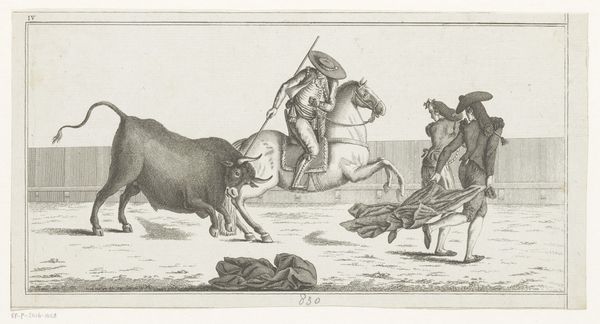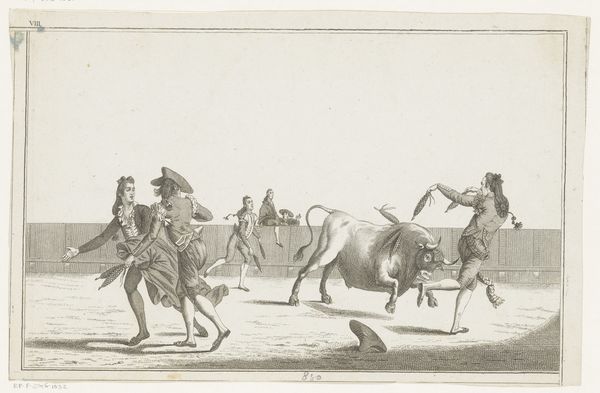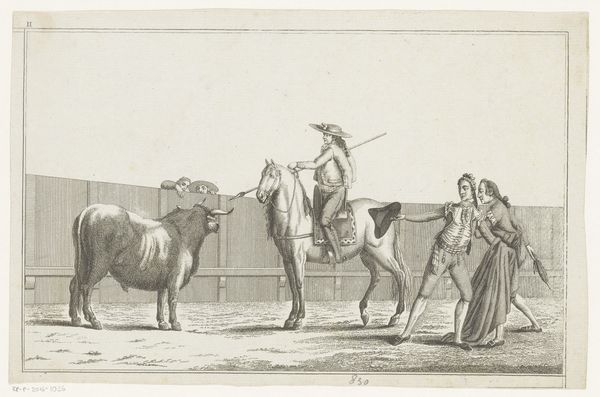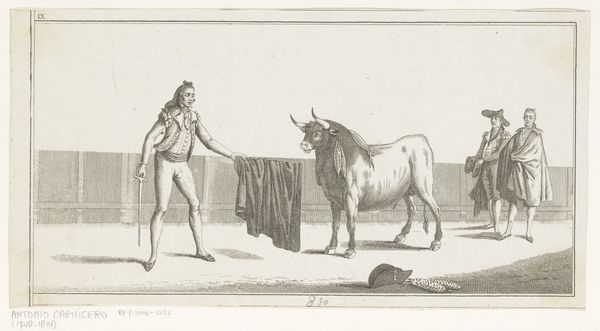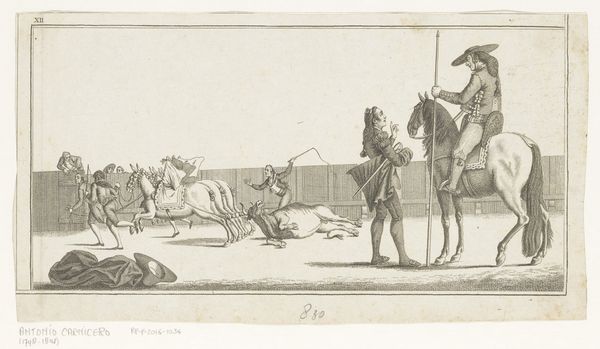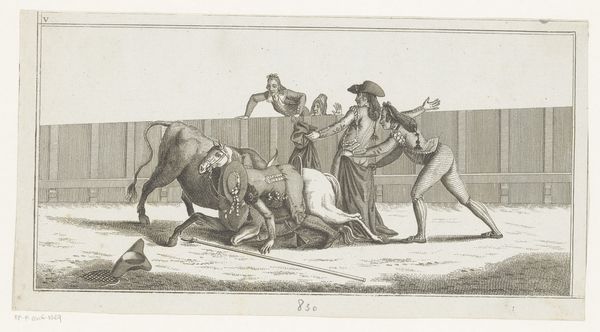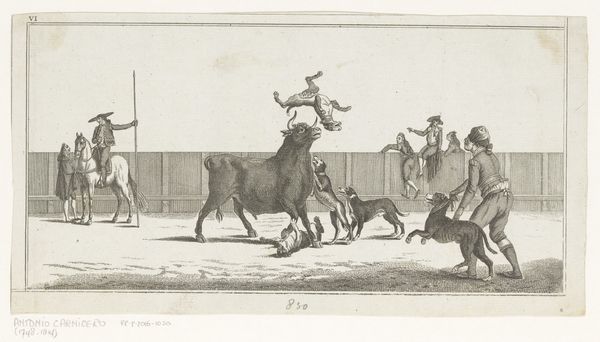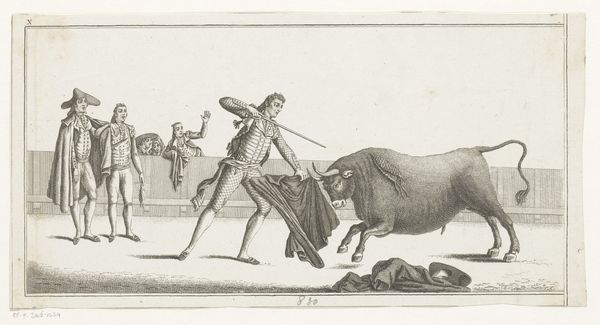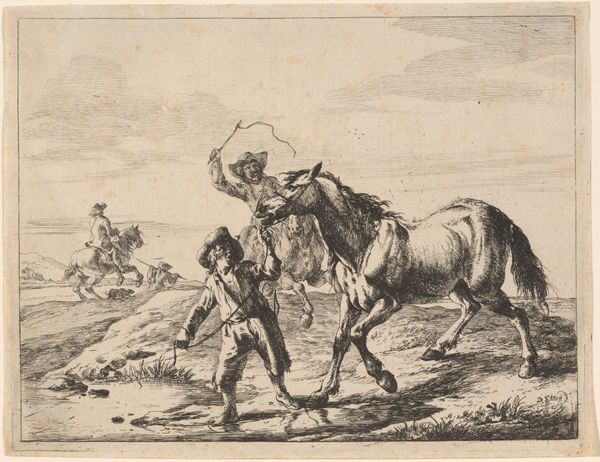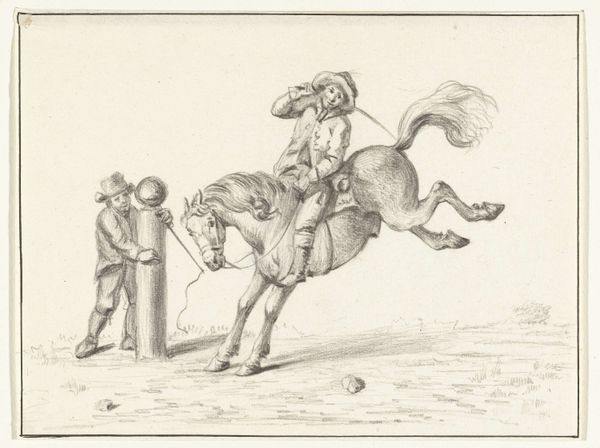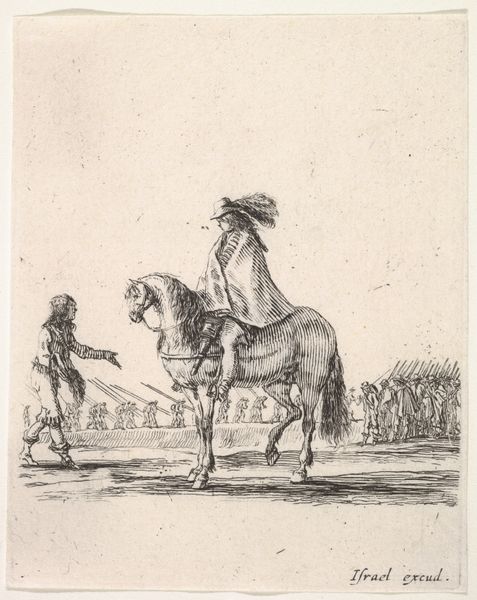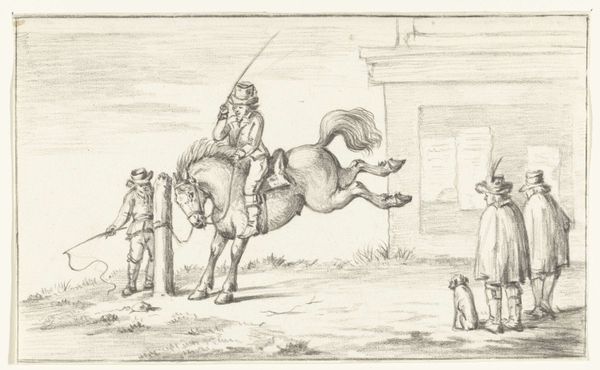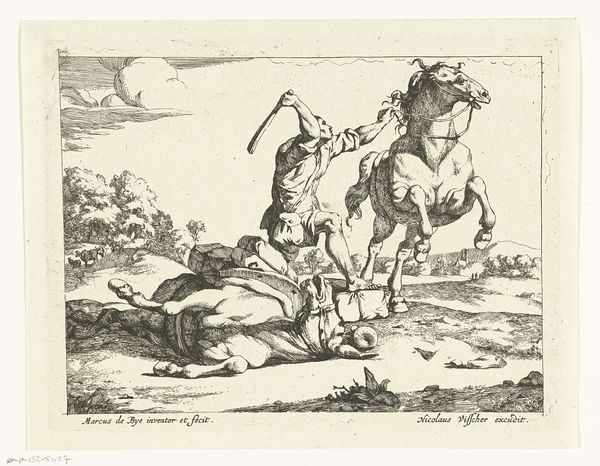
drawing, etching, engraving
#
drawing
#
narrative-art
#
etching
#
caricature
#
caricature
#
charcoal drawing
#
figuration
#
pencil drawing
#
line
#
watercolour illustration
#
genre-painting
#
history-painting
#
academic-art
#
engraving
#
realism
Dimensions: height 190 mm, width 290 mm
Copyright: Rijks Museum: Open Domain
Curator: Looking at this etching from after 1790, entitled "Picador steekt zijn lans in een stier" we see a bullfighting scene. What’s your initial impression? Editor: The drama feels a bit... staged? Like a dance of power more than a truly spontaneous clash. It seems carefully orchestrated, perhaps even a touch cruel. Curator: Interesting observation. Etchings like this, particularly from this period, offer insight into how printmaking disseminated imagery of popular entertainment. We see a focus on the line, achieved through the etching process. The labor of the printmaker is quite visible, even though it’s an anonymous work. It also raises questions about consumption of these spectacles and their reflection on social structures. Editor: The bullfighting itself is a potent symbol. The bull often embodies brute strength, primal instincts, and untamed nature, while the picador, mounted on his horse, and the other figure represents intelligence and civilization’s attempts to dominate such raw forces. Doesn't it say a lot about our relationship with the natural world? Curator: It’s all performative though. The class and material divide are hard to ignore. The Picador's position, elevated on horseback and adorned with distinct attire, represents the social hierarchies at play. Meanwhile the etching itself as a reproducible medium made art more accessible. But it would still appeal mostly to a specific segment of society: those who could afford prints. Editor: Definitely, I am also wondering how people at the time understood the image of the bull in the work. Was the bull purely a representation of an aggressive creature or was it loaded with additional symbolic weight in relation to ideas circulating at the time? Curator: Considering the cultural context of the time, these etchings may have served multiple functions beyond documentation: advertisement, perhaps propaganda, glorifying a certain lifestyle or simply responding to an appetite for visual drama. Editor: Ultimately, the images have remained potent even for those disconnected from its original context, proving how images can accumulate layer upon layer of symbolism. Curator: It’s amazing how looking at the medium can open the entire process of its consumption up. The cultural history within its physical production. Editor: Indeed, contemplating the layers of meaning embedded in something seemingly straightforward has changed my understanding.
Comments
No comments
Be the first to comment and join the conversation on the ultimate creative platform.
